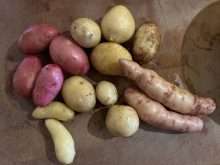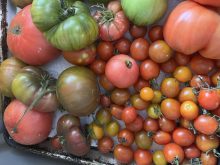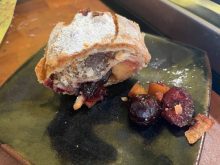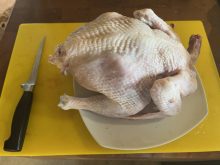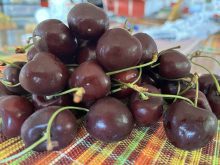Threshing, winnowing, drying. Those ancient words resonate with us, and for good reason. Humans have been harvesting grains to use for food by these timeless methods for millennia. Just think of wheat, barley, rice — and quinoa (pronounced keen wah).
Quinoa, like amaranth, is not a grain, but a high-fibre pseudo-grain — an herb, in fact, a cousin of sugar beets, beetroot and spinach.
The quinoa plant is frost-resistant and salt-resistant, thrives in poor soil and is generally tough, with a massive branching taproot that makes it mostly drought-resistant. All of this makes it ideal for its region of origin in the Andes Mountains of South America, where it was revered as a mother-grain and eaten as a staple for thousands of years by that region’s indigenous Inca, Aymara and Quechua people. As recounted in the National Research Council’s 1989 book, Lost Crops of the Incas, adventurer Thor Heyerdahl took quinoa with him on his single-sail balsa and bamboo raft, Kon-Tiki, when he and six companions sailed across the Pacific Ocean from Peru to French Polynesia in 1947. Seven thousand kilometres in three and a half months — any foodstuffs taken onboard had to be high-value and easily stored!
Read Also

Gentle treatments for pain in the neck
Heading toward year-end, people unknowingly tense up against the cold and busyness, causing neck pain that can often be treated with appropriate support and gentle mobility, athletic therapist Kathlyn Hossack says.
In contemporary kitchens, quinoa is viewed as a superfood — a rare plant containing all nine essential amino acids that constitute complete protein. One complication to cooking quinoa is the need to either soak and rinse the seeds or dry-roast them, which removes a bitter external layer of soap-like saponin. Historians have shown the soaked-away saponin was used by the Inca people as a laundry soap.

When cooking, think of quinoa like rice: it can be steamed into a pilaf, or ground into flour. Remember that it quadruples in volume when cooked, so don’t be tempted to add just a little bit more, unless you want to eat leftovers (usually a good thing!).
Bonus: young quinoa leaves are tender, good steamed or sauteed. One of my personal complaints about eating grain dishes is the monotonous texture that goes bite-by-bite with the genre. So just as when making a rice pilaf or risotto or biryani, when cooking quinoa I add other textures and flavours.
So here we are, finally at the kitchen counter, getting ready to plan a brunch for the bunch. Grain dishes serve as wonderful brunch centrepieces, enabled by make-ahead smarts. Make the pilaf today; tomorrow you can use the leftovers to stuff and roast a little bird or serve alongside a grilled steelhead fillet after you’ve had your morning coffee, and still manage to serve brunch at 1 p.m. — perfect planning. First we eat, then we discuss other meals that can be made ahead, ideal for spring gardening season.
Quinoa fruit pilaf and stuffing

This spicy blend of multi-textured bits and bites makes a stellar main course on its own, rounded out with greens or seasonal vegetables. It shines as a stuffing for a whole roasting chicken, served with roasted steelhead, or tucked under the skin of boneless chicken parts.
The dish takes 30 minutes to make — a worthwhile investment of time for a yummy meal with multiple serving possibilities and delicious leftovers. Make a day ahead, if brunch is the game plan. Adapted from The Versatile Grain and the Elegant Bean by Sheryl and Mel London (Simon and Schuster, 1992). Serves 6.
- 1 cup quinoa
- 2 Italian sausages, removed from casings and crumbled
- 1 tsp. fennel seed
- 2 Tbsp. olive oil
- 6 cloves garlic, minced
- 1 Tbsp. grated ginger root
- 1 onion, minced
- 1 carrot, coarsely ground
- 1 tsp. sweet Hungarian paprika
- ½ tsp. smoked paprika
- 1 tsp. freshly ground coriander
- 1 apple or pear, finely diced
- ½ c. dried cranberries
- ½ c. diced dried apricot
- ½ tsp. dried thyme
- ½ tsp. dried oregano
- ½ tsp. dried basil
- 1 Tbsp. pomegranate molasses
- 1 orange, zest and juice
- ¼ c. minced fresh chives or parsley
- ½ c. chopped toasted walnuts, pecans or pistachios
- salt and pepper to taste
- 1 lemon, zest and juice
Put the quinoa in a medium pot and dry-roast uncovered over medium-high heat for 5 minutes, stirring. Add 2 cups of boiling salted water (caution – it spatters!), cover, and steam on low heat for 12-15 minutes. Leave the lid on and let it stand while you finish preparations.
Sauté the sausages with the fennel seed until cooked through, remove from the pan, then heat the oil and sauté garlic and ginger for 1-2 minutes. Add onion and carrot; sweat over low heat until tender, about 10 minutes. Add paprika and coriander. Combine with cooked quinoa and all remaining ingredients. Mix well. Season to taste with lemon zest and juice, salt and pepper. Serve hot or chill to use a day later as a main, side, or stuffing. When reheating, add a little water or orange juice.



